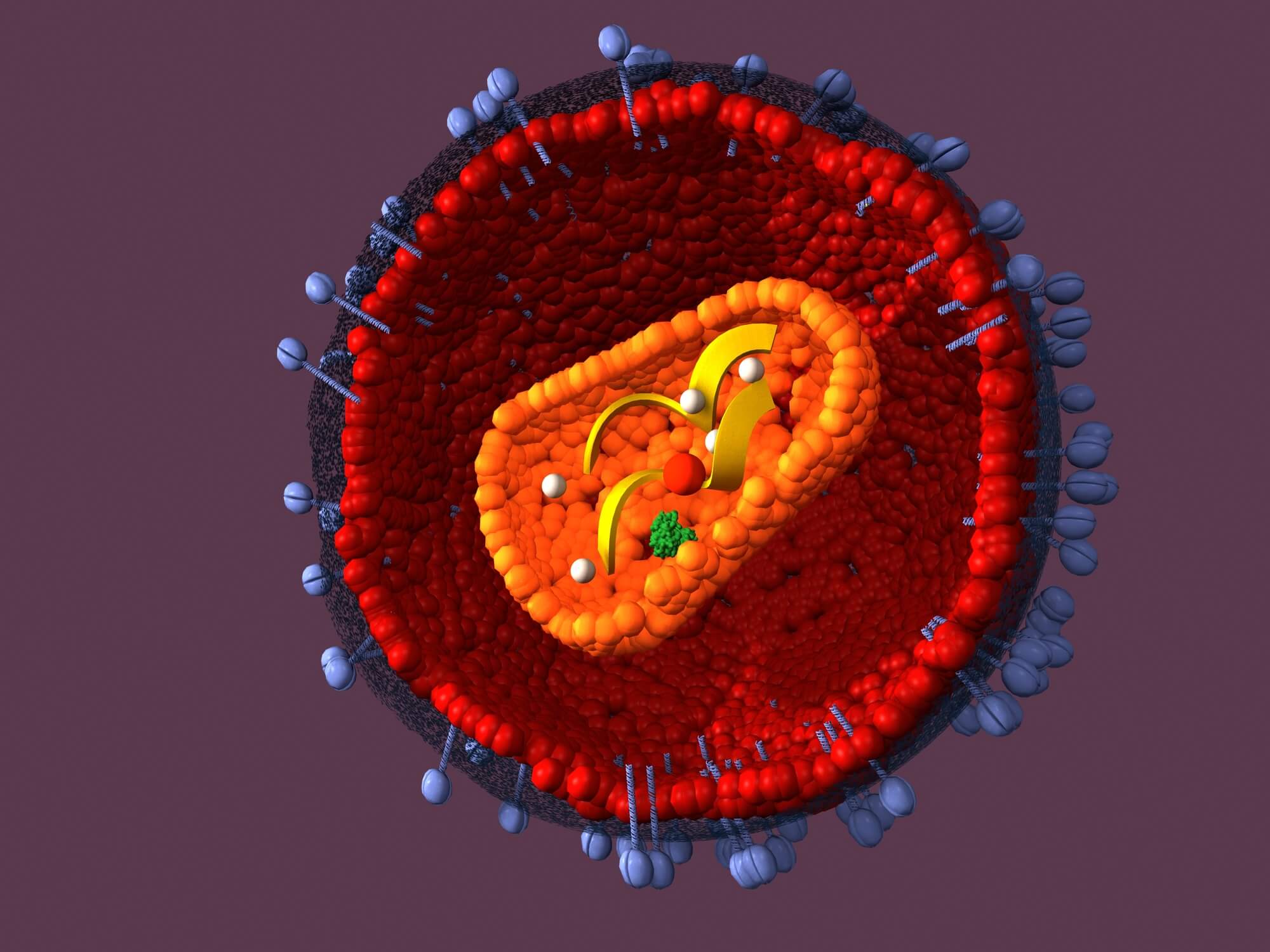Researchers examine how the ancient viral DNA in the human genome plays a role in disease and human development
By By Aidan Burn PhD student in genetics, Tufts University

Remnants of ancient viral epidemics in the form of viral DNA sequences embedded in our genomes are still active in healthy people, suggests From a new study My colleagues and I We recently published
HERVs, or human endogenous retroviruses, are About 8% of the human genome. These were left behind as a result of infections that the primates, the ancestors of mankind, suffered from millions of years ago. They have become part of the human genome because of the way they replicate.
Similar to modern HIV, The retroviruses These ancients had to insert their genetic material into their host's genome in order to reproduce. Normally this type of viral genetic material is not passed from generation to generation. But some ancient retroviruses got the ability infect germ cells, like an egg or a sperm, since they pass their DNA on to future generations. By targeting germ cells, these retroviruses have been integrated into the ancient genomes of humans for millions of years, and may have implications for how researchers diagnose and test disease today.
Active viral genes in the human genome
Viruses inject their genomes into their hosts in the form of Pro virus. There are today About 30 different types of human endogenous retroviruses in humans, totaling more than 60,000 proviruses in the human genome. They demonstrate the long history of the many plagues that humanity has been subject to during evolution. Scientists believe that these viruses once widely infected the population, as they became fixed not only in the human genome but also in a chimpanzee, gorilla and in the genomes of other primates.
Studies from our lab and others have shown that HERV genes are active in diseased tissues, such as Tumors, as well as during Human embryonic development. But how active HERV genes are in healthy tissues was still largely unknown.
To answer this question, our lab decided to focus on one group of HERV components known as HML-2. This group is The newest active HERVs, after becoming extinct less than 5 million years ago. Even today, some of its proviruses within the human genome still retain the ability to produce viral proteins.
We tested the genetic material in the containing repository Over 14,000 tissue samples from all body organs. We searched for sequences that matched every HML-2 provirus in the genome and found 37 different HML-2 proviruses that were still active. All 54 tissue samples we analyzed had some evidence of the activity of one or more of these proviruses. Furthermore, each tissue sample also contained genetic material from at least one provirus that could still produce viral proteins.
The role of HERVs in human health and disease
The fact that thousands of pieces of ancient viruses are still present and active in the human genome and can even make protein has attracted considerable attention from researchers, especially since related viruses that are still active today can cause for breast cancer and to diseases AIDS characters in animals.
The question of whether the genetic remnants of human endogenous retroviruses can cause disease in humans is still being investigated. Researchers identified virus-like particles from HML-2 in cancer cells, and the presence of the HERV genetic material in diseased tissue has been linked to conditions such as Lou Gehrig's disease (ALS), or amyotrophic lateral sclerosis, As well as Multiple Sclerosis and even schizophrenia.
Our study adds a new angle to these data by showing that HERV genes are present even in healthy tissues. This means that the presence of HERV RNA cannot be sufficient to link the virus to the disease.
Importantly, this also means that HERV genes or proteins can no longer be good drug targets. HERVs have been studied as a target for several potential drugs, incl Antiretroviral drugs, Antibodies to breast cancer and T-cell therapies for melanoma. Treatments using HERV genes as a cancer biomarker will also need to take into account their activity in healthy tissue.
On the other hand, our research also suggests that HERVs can even be beneficial to people. The most famous HERV embedded in human and animal genomes, Syncytin, is a gene derived from an ancient retrovirus that plays an important role in the formation of the placenta. Pregnancy in all mammals depends on a virus-derived protein encoded by this gene.
in a similar way, Mice too, cats and sheep found a way to use endogenous retroviruses to protect themselves from the original ancient virus that created them. While these imprinted viral genes are unable to use their host's machinery to make a full virus, enough of their damaged parts circulate in the body to disrupt the replication cycle of their progenitor virus if the host encounters it. Scientists speculate that It is possible that one HERV played this protective role for humans millions of years ago. Our study highlights that there are several other HERV components that the human body could have recently selected for the same purpose.
remain unknown
Our study reveals a previously unknown level of HERV activity in the human body, which raises as many questions as the study answered.
There is still much to learn about the ancient viruses that remain in the human genome, including whether their presence is beneficial and what mechanism drives their activity. It is also important to see if one of these genes actually turns into proteins.
Answering these questions could reveal previously unknown functions for these ancient viral genes and help researchers better understand how the human body responds to evolution alongside these remnants of ancient epidemics.
For an article in The Conversation
More of the topic in Hayadan:
